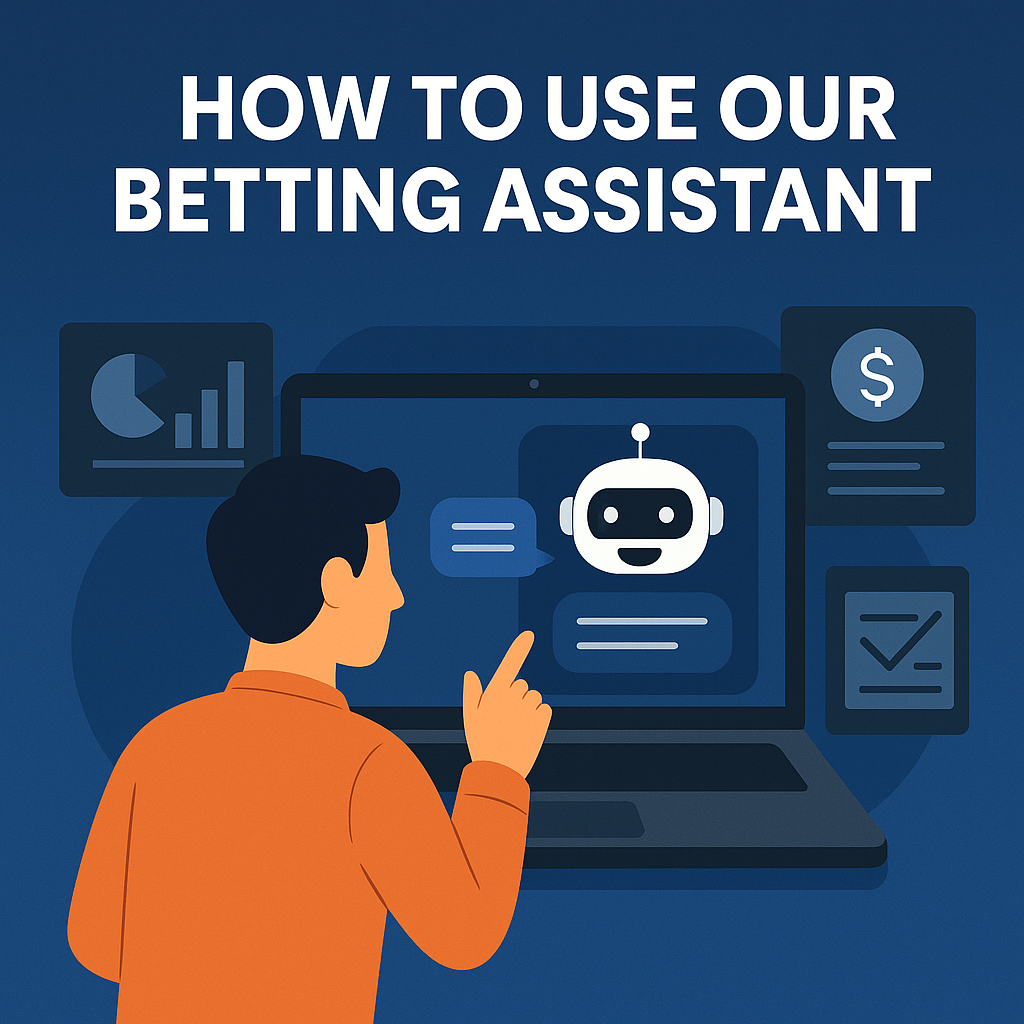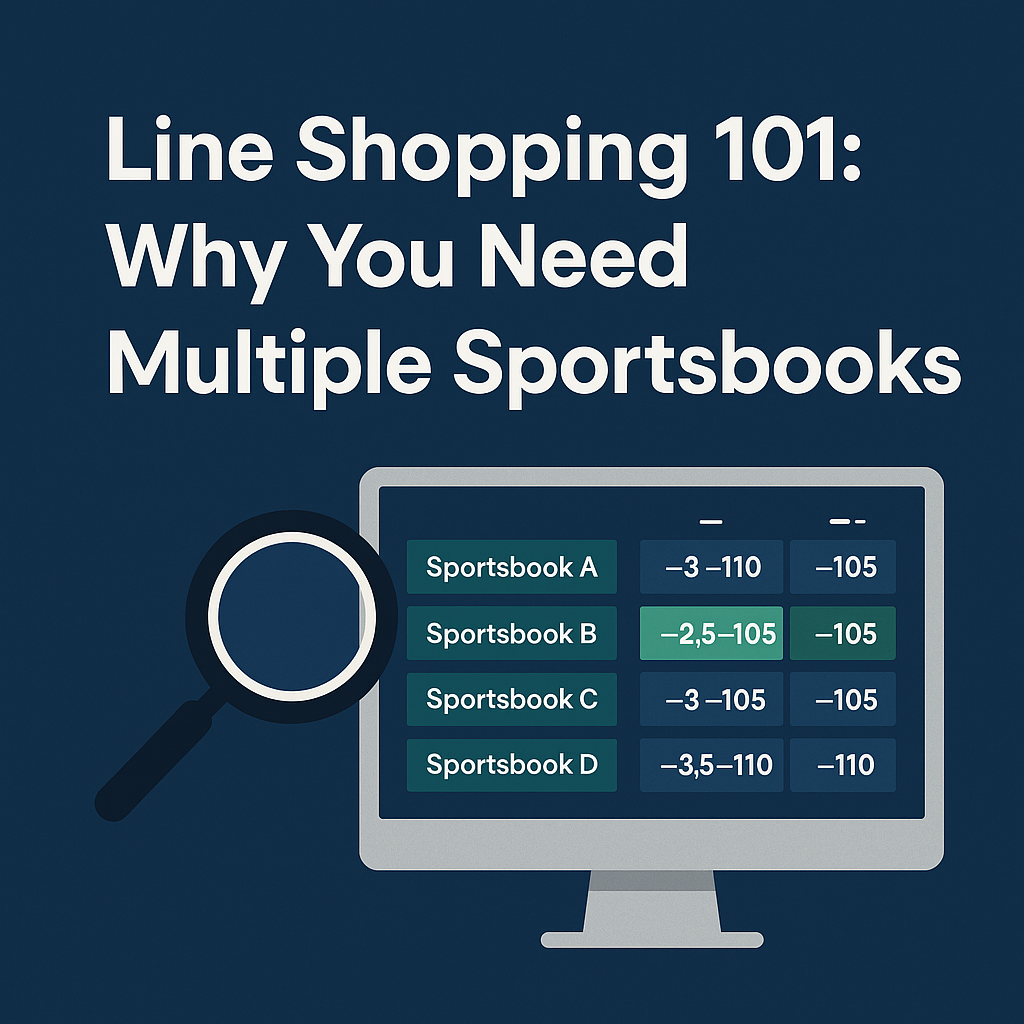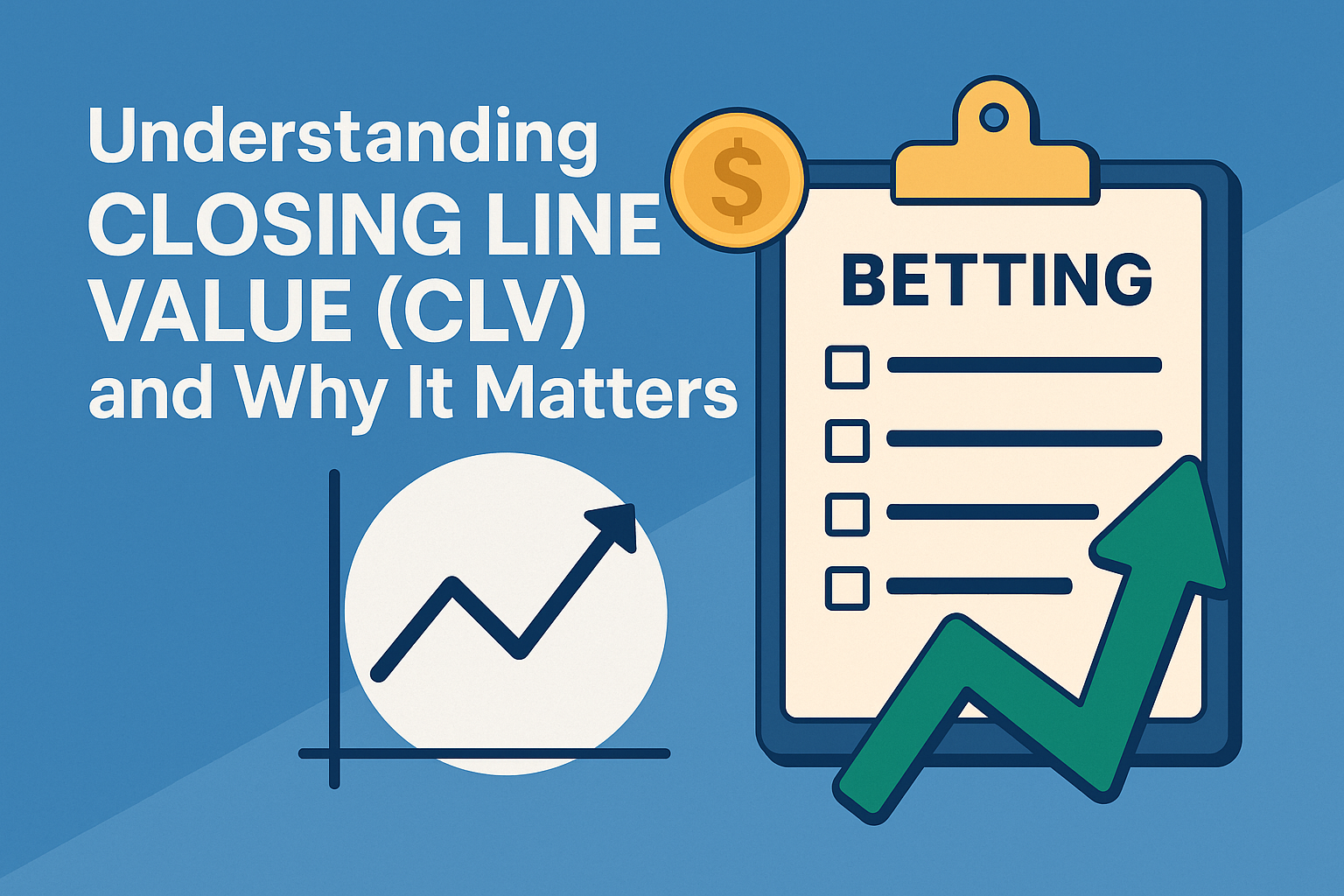Understanding Closing Line Value (CLV) and Why It Matters
If you're serious about long-term betting success, there's one metric that matters more than any other: Closing Line Value (CLV). This powerful concept separates winning bettors from the rest and serves as the most reliable predictor of future profitability. In this comprehensive guide, we'll explore what CLV is, why it's crucial for your betting success, and how to track and improve it consistently.
What is Closing Line Value (CLV)?
Closing Line Value measures how much better the odds you received were compared to the closing odds (the final odds before a game starts). It's calculated by comparing the price you got when you placed your bet versus the price available when betting closes.
Simple Example:
- You bet Lakers -3.5 at -110 on Monday
- By game time Friday, the line closed at Lakers -5.5 at -110
- You gained 2 points of CLV (you got a better number)
CLV is expressed in several ways:
- Point Value: The difference in points/runs/goals
- Percentage: The difference in implied probability
- Cents: The difference in juice/vig
Why CLV is the Ultimate Betting Metric
1. Predictive Power
CLV is the only betting metric that's been scientifically proven to predict long-term profitability. Studies have shown that bettors with consistent positive CLV are profitable over time, regardless of their short-term win/loss record.
2. Market Efficiency Validation
The closing line is considered the most accurate prediction of true odds because it incorporates all available information and the collective wisdom of all bettors. Beating it consistently indicates genuine skill.
3. Removes Short-Term Noise
Unlike win percentage, which can be influenced by luck over small samples, CLV provides immediate feedback on your betting decisions regardless of outcomes.
The Mathematics Behind CLV
Converting Odds to Implied Probability
To calculate CLV accurately, you need to understand implied probability:
American Odds:
- Favorites: Risk Amount / (Risk Amount + Win Amount)
- Example: -110 = 110 / (110 + 100) = 52.38%
- Underdogs: Win Amount / (Win Amount + Risk Amount)
- Example: +150 = 100 / (100 + 150) = 40%
CLV Calculation Formula
CLV% = (Closing Implied Probability - Your Implied Probability) / Your Implied Probability × 100
Example Calculation:
- Your bet: Team A +150 (40% implied probability)
- Closing line: Team A +120 (45.45% implied probability)
- CLV% = (45.45% - 40%) / 40% × 100 = +13.6% CLV
Real-World CLV Examples
Example 1: NFL Point Spread
Your Bet: Patriots -6.5 (-110) on Tuesday
Closing Line: Patriots -9 (-110) on Sunday
Result: +2.5 points of CLV (excellent)
Analysis: You identified value early in the week that the market later confirmed by moving the line significantly in your favor.
Example 2: NBA Total
Your Bet: Lakers vs Warriors Over 225.5 (-105)
Closing Line: Over 223 (-110)
Result: +2.5 points CLV and better juice
Analysis: Double win - you got both a better number and better odds
Example 3: Negative CLV Warning
Your Bet: Cowboys +3 (-110) on Saturday
Closing Line: Cowboys +1 (-110) on Sunday
Result: -2 points CLV (poor)
Analysis: The market moved against you, suggesting you may have bet into a "square" number
How to Track Your CLV
Manual Tracking Method
Create a spreadsheet with these columns:
- Date of bet
- Game/matchup
- Your line
- Your odds
- Closing line
- Closing odds
- CLV (points)
- CLV (percentage)
Using ThunderBet's CLV Tracker
Our platform automatically tracks CLV for all your logged bets:
- Real-time monitoring: See CLV as lines move throughout the week
- Historical analysis: Review CLV trends over time
- Sport-specific breakdowns: Identify which sports you're best at timing
- Alert system: Get notified when your pending bets gain/lose significant CLV
Interpreting Your CLV Results
CLV Benchmarks
- +3% or higher: Excellent - You're consistently finding value
- +1% to +3%: Good - You're beating the market regularly
- -1% to +1%: Average - Breaking even with market efficiency
- -3% to -1%: Poor - You may be betting into square numbers
- Below -3%: Very Poor - Significant strategy adjustment needed
Sample Size Considerations
CLV becomes meaningful with larger sample sizes:
- 50+ bets: Early indication of skill level
- 100+ bets: Reliable skill measurement
- 500+ bets: Highly confident assessment
- 1000+ bets: Definitive long-term skill indicator
Strategies to Improve Your CLV
1. Bet Earlier in the Week
Lines are typically softer when first posted:
- NFL: Bet Sunday night or Monday for next week's games
- NBA: Bet morning lines before sharp money moves them
- College Sports: Bet as soon as lines are posted
2. Follow Sharp Money Indicators
- Line movement against public betting percentages
- Steam moves across multiple sportsbooks
- Reverse line movement patterns
- Low-hold situations indicating sharp disagreement
3. Line Shopping for CLV
Different books often have slightly different closing lines:
- Track multiple books' closing lines
- Use the most efficient book's closing line for CLV calculations
- Consider "market consensus" closing lines
4. Develop Information Edges
- Injury News: Beat the market to injury information
- Weather: Understand weather impact before oddsmakers adjust
- Lineup Changes: Track starting lineups and coaching decisions
- Motivational Factors: Identify rest vs. motivation spots
Common CLV Mistakes to Avoid
1. Chasing CLV for Its Own Sake
CLV should complement your handicapping, not replace it. Don't bet games you don't like just because you found early value.
2. Ignoring Bet Sizing with CLV
Bets with higher CLV should generally receive larger stakes. Use CLV as an input for your Kelly Criterion calculations.
3. Using Wrong Closing Lines
Use closing lines from sharp sportsbooks (Pinnacle, Circa) rather than recreational books that may close with less efficient numbers.
4. Short-Term Overreaction
Don't panic over short-term negative CLV stretches. Focus on the long-term trend and process improvement.
CLV Across Different Bet Types
Point Spreads and Totals
Most straightforward CLV calculation - simply compare the numbers you got versus closing.
Moneylines
Calculate using implied probability differences. Small odds movements can represent significant CLV.
Player Props
Often have the highest CLV potential due to less efficient markets and information gaps.
Futures
Require special consideration as "closing lines" change based on when you evaluate (end of regular season, playoffs, etc.).
Advanced CLV Concepts
Multi-Way Market CLV
For three-way markets (soccer, hockey), CLV calculations become more complex as you need to consider all possible outcomes.
CLV and Expected Value Correlation
Positive CLV strongly correlates with positive expected value, making it a proxy for long-term profitability.
Market-Specific CLV Standards
Different markets have different CLV expectations:
- NFL: Higher CLV potential due to week-long information flow
- NBA: Lower CLV expectations due to frequent games
- Props: Highest CLV potential but requires specialized knowledge
Using CLV for Bet Sizing
Kelly Criterion with CLV
Incorporate CLV into your bet sizing formula:
- Higher CLV = Higher confidence = Larger bet size
- Negative CLV = Consider reducing bet size or passing
- Use CLV% as an input for your estimated edge calculation
CLV-Based Staking Plan
Example Staking System:
- CLV +5% or higher: 3% of bankroll
- CLV +2% to +5%: 2% of bankroll
- CLV 0% to +2%: 1% of bankroll
- CLV negative: 0.5% of bankroll or pass
Conclusion: Making CLV Your North Star
Closing Line Value is the most important metric in sports betting because it's the only one that reliably predicts future success. While short-term results can be influenced by luck, CLV provides immediate, objective feedback on your betting decisions.
Key Takeaways:
- Track CLV for every bet you make
- Aim for consistent positive CLV over large samples
- Use CLV to inform your bet sizing decisions
- Don't panic over short-term negative CLV streaks
- Continuously work to improve your CLV through better timing and information
Remember: you can lose money with positive CLV in the short term due to variance, but you cannot make money long-term with consistently negative CLV. Make CLV your primary focus, and profitability will follow.
Ready to start tracking your CLV? Use ThunderBet's automatic CLV tracking and begin optimizing your betting timing today.




